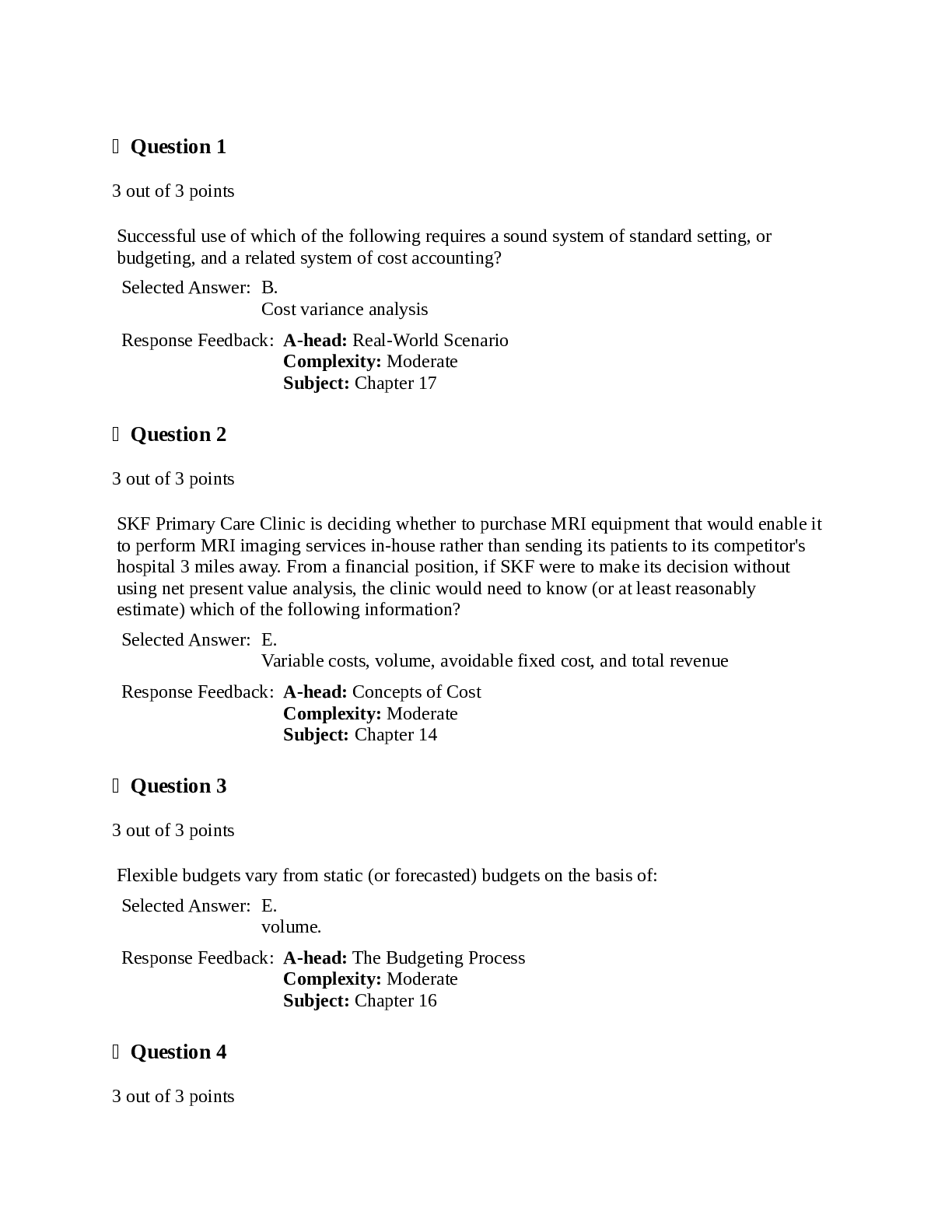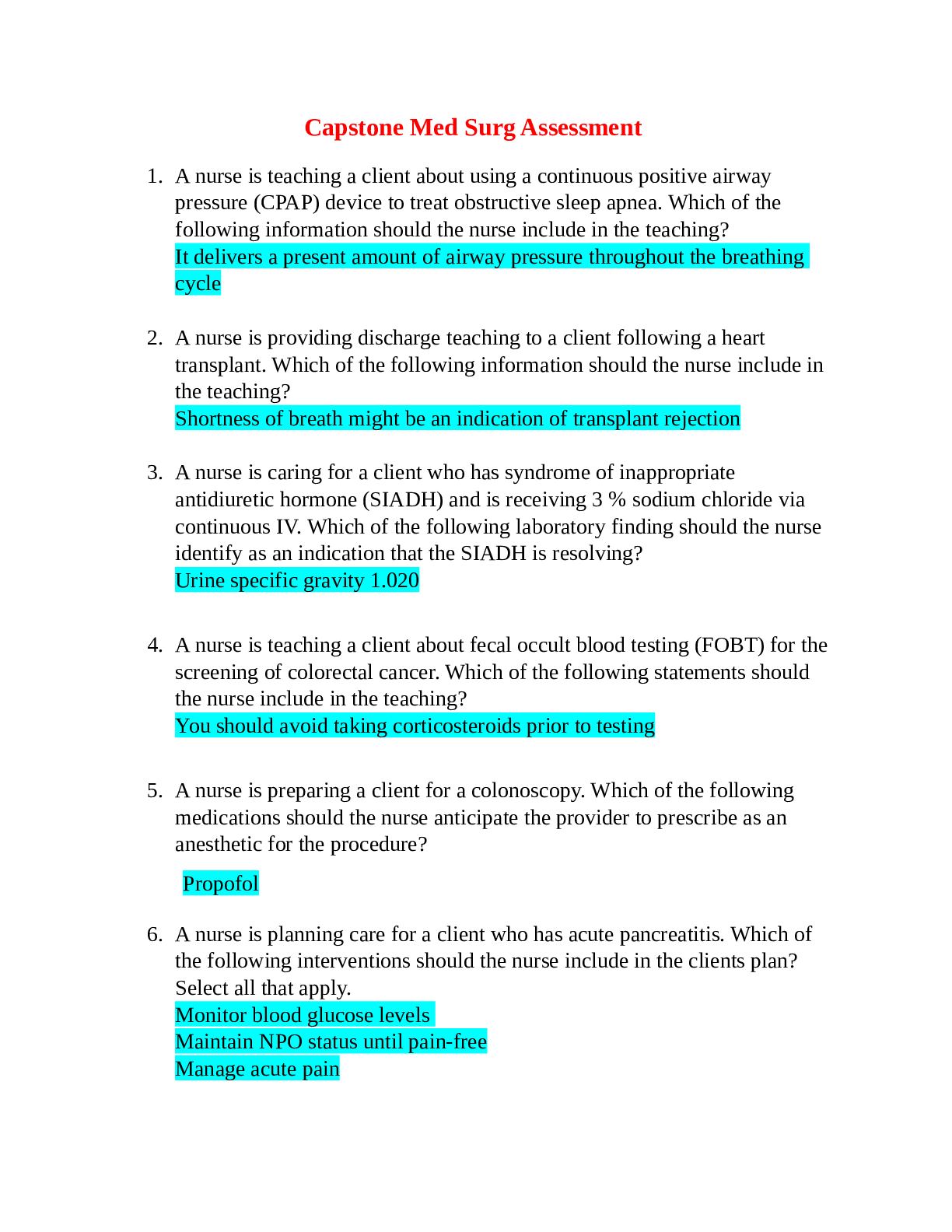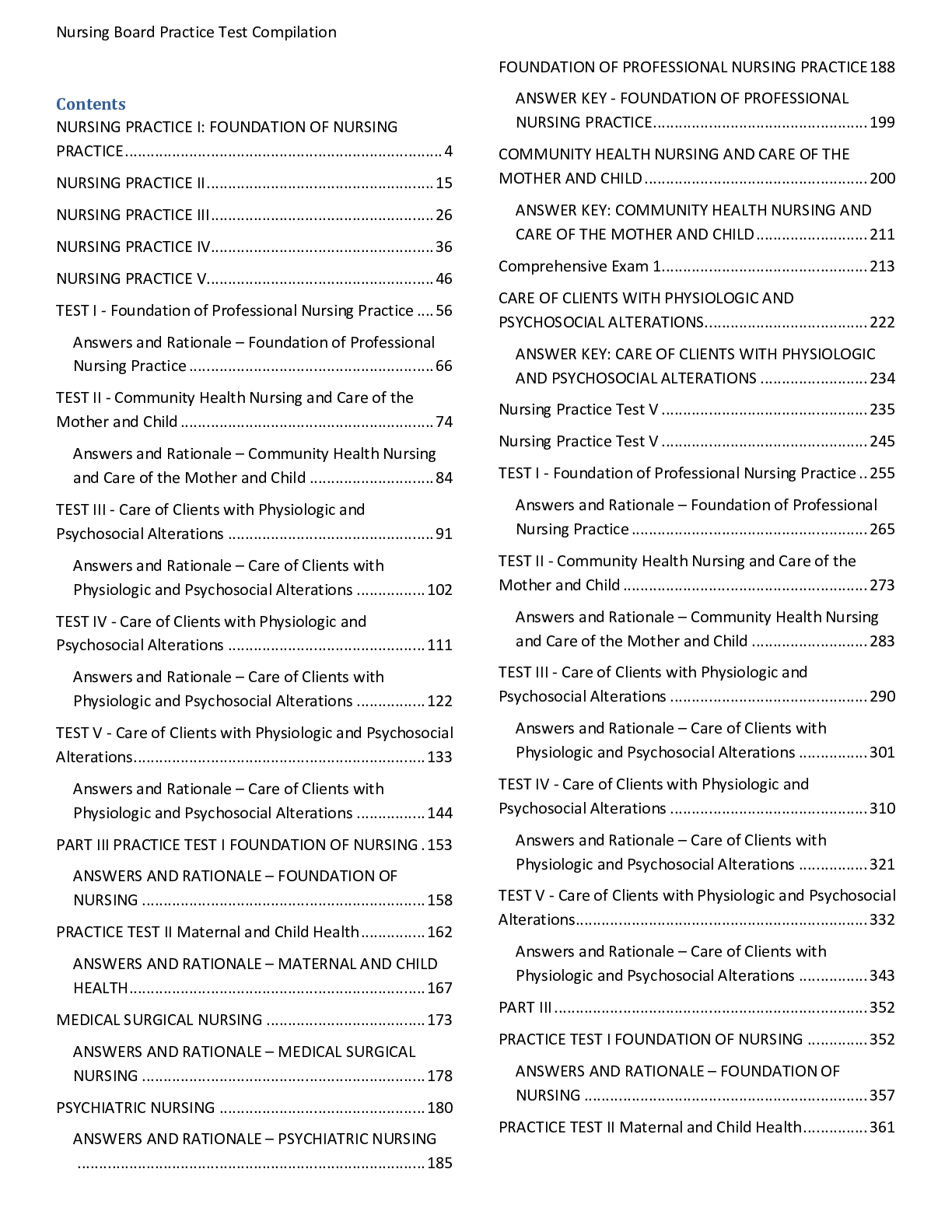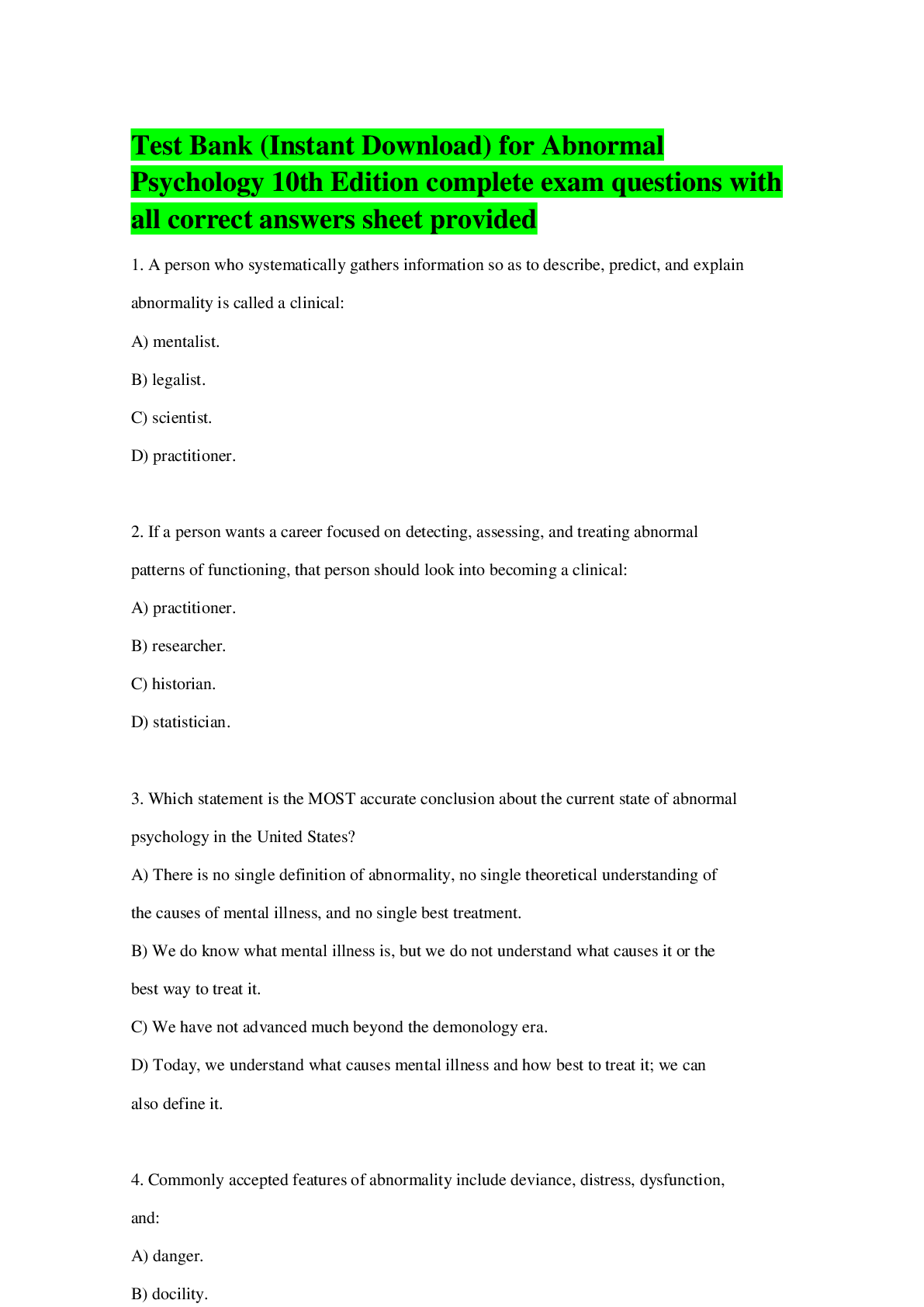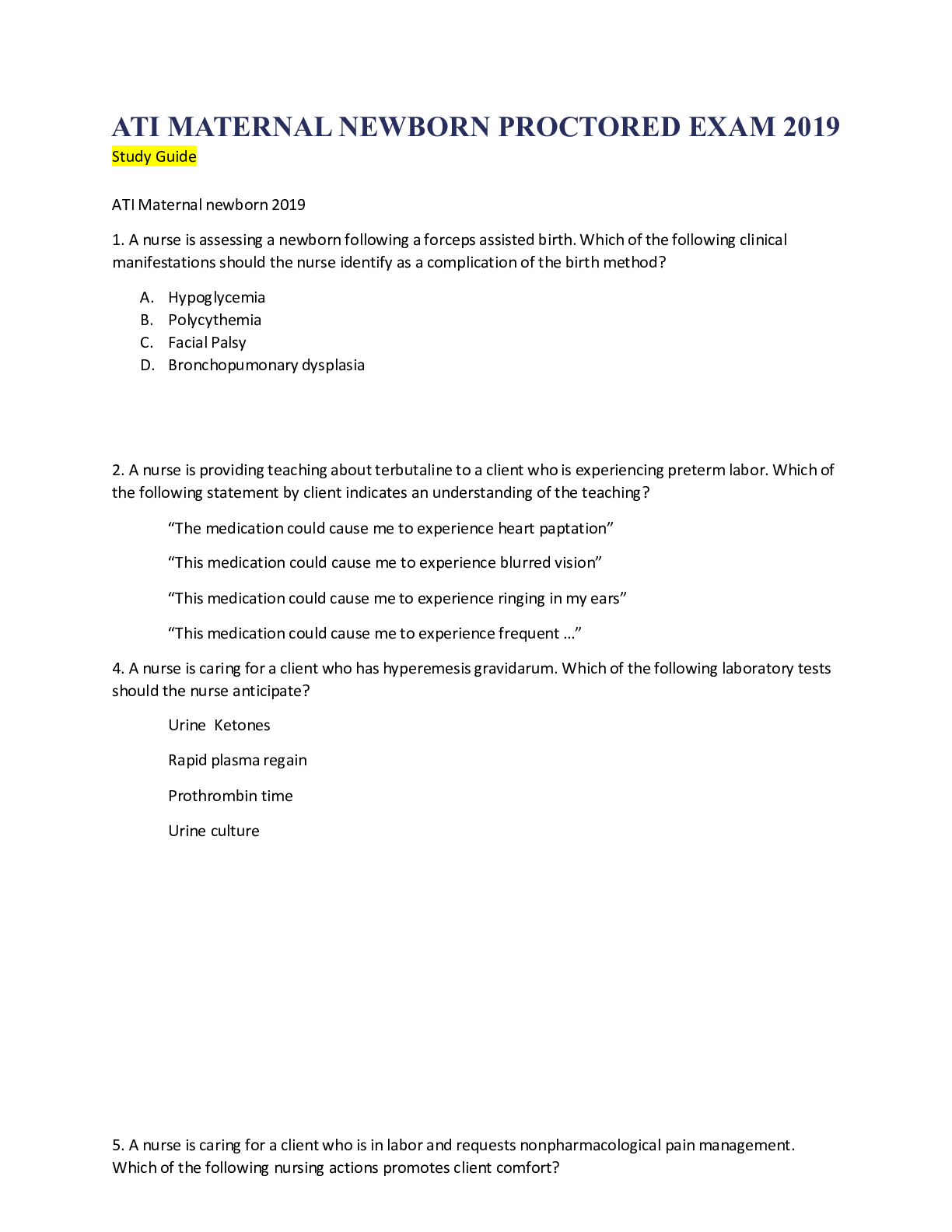*NURSING > QUESTIONS & ANSWERS > Pediatric Proctor (70/70 practice Questions with all correct answers (All)
Pediatric Proctor (70/70 practice Questions with all correct answers
Document Content and Description Below
Pediatric Proctor (70/70 practice Questions with all correct answers 1. A nurse is preparing to assess a 4-year old child’s visual acuity. Which of the following actions should the nurse plan fi rst... ? • Use a tumbling E chart for the assessment • Position the child 4.6 meters (15 feet) from the chart • Assess both eyes together first, then each eye separately • Test the child without glasses before testing with glasses 2. A nurse is providing discharge teaching to a parent of a child who has juvenile idiopathic arthritis and a new prescription of prednisone/etarnecept. Which of the following statement should the nurse include in the teaching? • “Discontinue this medication if gastrointestinal upset occurs.” • “Expect that this medication will stimulate a growth spurt.” • “Limit your child’s intake of potassium-rich foods.” • “Monitor your child for indications of infection.” 3. A nurse on a pediatric unit is caring for four children. The nurse should use droplet precautions for which of the following children? • An adolescent who has hepatitis A • A toddler who has seasonal influenza • A preschool-age child who has pediculosis capitis • A school-age child who has viral conjunctivitis 4. A nurse is providing teaching to an adolescent who has vulvovaginitis. Which of the following statements should the nurse include in the teaching? • “Apply a warm, moist compress three times per day.” • “Apply scented baby powder to absorb residual moisture.” • “Wear a feminine deodorant pad for vaginal drainage.” • “Wear nylon underwear at night.” 5. A nurse is creating a plan of care for a school-age child who has nephrotic syndrome. Which of the following interventions should the nurse include? (Select all that apply) • Provide a low-sodium diet • Encourage increased fluid intake • Assess for protein in the urine • Initiate contact precautions • Obtain a daily weight 6. A nurse in a pediatric unit is caring for a school-age child following a cardiac catheterization. Which of the following interventions would the nurse take? • Maintain NPO status for 24 hrs. following the procedure • Administer meperidine for pain every 4 hrs. • Perform a sterile dressing change 8 hrs. after the procedure • Keep the affected extremity straight for 6 hrs. 7. A nurse is teaching a parent of a toddler about administering digoxin. Which of the following statements by the parent indicates understanding of the teaching? • “I should mix the medication with 4 ounces of my child’s favorite juice.” • “I should give my child water after giving the medication.” • “I should give my child another dose if he vomits right after taking the medication.” • “I should give the medication with foods that are high in fiber.” 8. A nurse is caring for a 9-year-old child who has major burns to her face and upper torso. Which of the following actions should the nurse take first? • Administer a tetanus vaccine • Give pain medication • Begin enteral feedings • Initiate a crystalloid IV bolus 9. A nurse is planning care for a toddler who has developed oral ulcers in response to chemotherapy. Which of the following should the nurse include in the plan of care? • Schedule routine oral care every 8 hrs. • Administer oral viscous lidocaine • Moisten the mucous with lemon glycerin swabs • Cleanse the gums with saline soaked gauze 10. A nurse in a community health clinic is assessing the needs of a single parent who has three young children and works full time. Which of the following resources should the nurse recommend? • 12-step support group • Respite child care • Child home health care • Counseling for depression 11. A nurse is caring for a child who has a prescription for fluticasone and has developed white patches and sores in his mouth. Which of the following is an appropriate action for the nurse to take? • Encourage the use of a spacer • Withhold the medication until the lesions heal • Obtain a prescription for oral prednisone • Collect a culture from the lesions 12. A nurse is providing teaching to the parents of a child who has impetigo. Which of the following instructions should the nurse include in the teaching? • Seal soft toys in a plastic bag for 14 days • Apply bactericidal ointment to lesions • Administer acyclovir PO two times per day • Soak hairbrushes in boiling water for 10 min. 13. A nurse in an emergency department is caring for a child who has epiglottis. Which of the following actions should the nurse take? • Provide nebulizer aerosol therapy • Administer IV antibiotics • Inspect the tonsils using a tongue depressor • Collect a throat culture 14. A nurse is planning care for a child who is placed in skin traction. Which of the following is the priority action for the nurse to take? • Increase fluid intake • Maintain proper body alignment • Use an alternate pressure mattress • Monitor pedal pulses 15. A nurse is preparing to administer ondansetron 0.15 mg/kg IV to a child who is receiving chemotherapy and weighs 29.4 kg. Available is ondansetron 4 mg/2 mL solution. How many mL should the nurse administer? (Round the answer to the nearest tenth. Use a leading zero if it applies. Do not use a trailing zero) • Answer: 2.2 mL 16. A nurse is performing a physical assessment of a school-age child who has acute glomerulonephritis. Which of the following findings should the nurse expect? • Hypotension • Increased urinary output • Flushed skin • Facial edema 17. A nurse in an emergency department is assessing an adolescent who reports inhalation of gasoline. Which of the following findings should the nurse expect? • Hypothermia • Pinpoint pupils • Hyperactive reflexes • Ataxia 18. A nurse in the emergency department is assessing a toddler who has hyperpyrexia, severe dyspnea, and is drooling. Which of the following actions should the nurse take first? • Prepare the toddler for nasotracheal intubation • Insert an IV catheter for the toddler • Obtain a blood culture from the toddler • Administer an antibiotic to the toddler 19. A nurse is caring for an infant who has a patent ductus arteriosus. The nurse should identify that the defect is at which of the following locations of the heart? (You will find hot spots to select in the artwork below. Select only the hot spot that corresponds to your assessment) • Answer: 20. A nurse is caring for an infant who has hydrocephalus and ventriculoperitoneal shunt malfunction. Which of the following assessment findings indicates that the infant is experiencing increased intracranial pressure? • Increased appetite • Irritability • Flat fontanel • Tachycardia 21. A nurse is assessing an infant who has iron deficiency anemia. Which of the following findings should the nurse expect? • Increased hemoglobin level • Hyperactive muscle tone • Bradycardia • Pale conjunctiva 22. A nurse is caring for a child who received partial thickness burns to over 50% of his body 10 days ago and has splints over his joints to prevent contractions. Which of the following actions should the nurse take? (Select all that apply) • Provide a high-calorie diet • Administer analgesics IM • Remove splints during sleep • Change dressings using aseptic technique • Monitor intake and output 23. A school nurse is assessing a 7-year-old student. The nurse should identify which of the following findings as a potential indicator of physical abuse? • Bruising around the wrists • Abrasions on the knees • [Show More]
Last updated: 1 year ago
Preview 1 out of 14 pages

Reviews( 0 )
Document information
Connected school, study & course
About the document
Uploaded On
Mar 19, 2021
Number of pages
14
Written in
Additional information
This document has been written for:
Uploaded
Mar 19, 2021
Downloads
0
Views
53


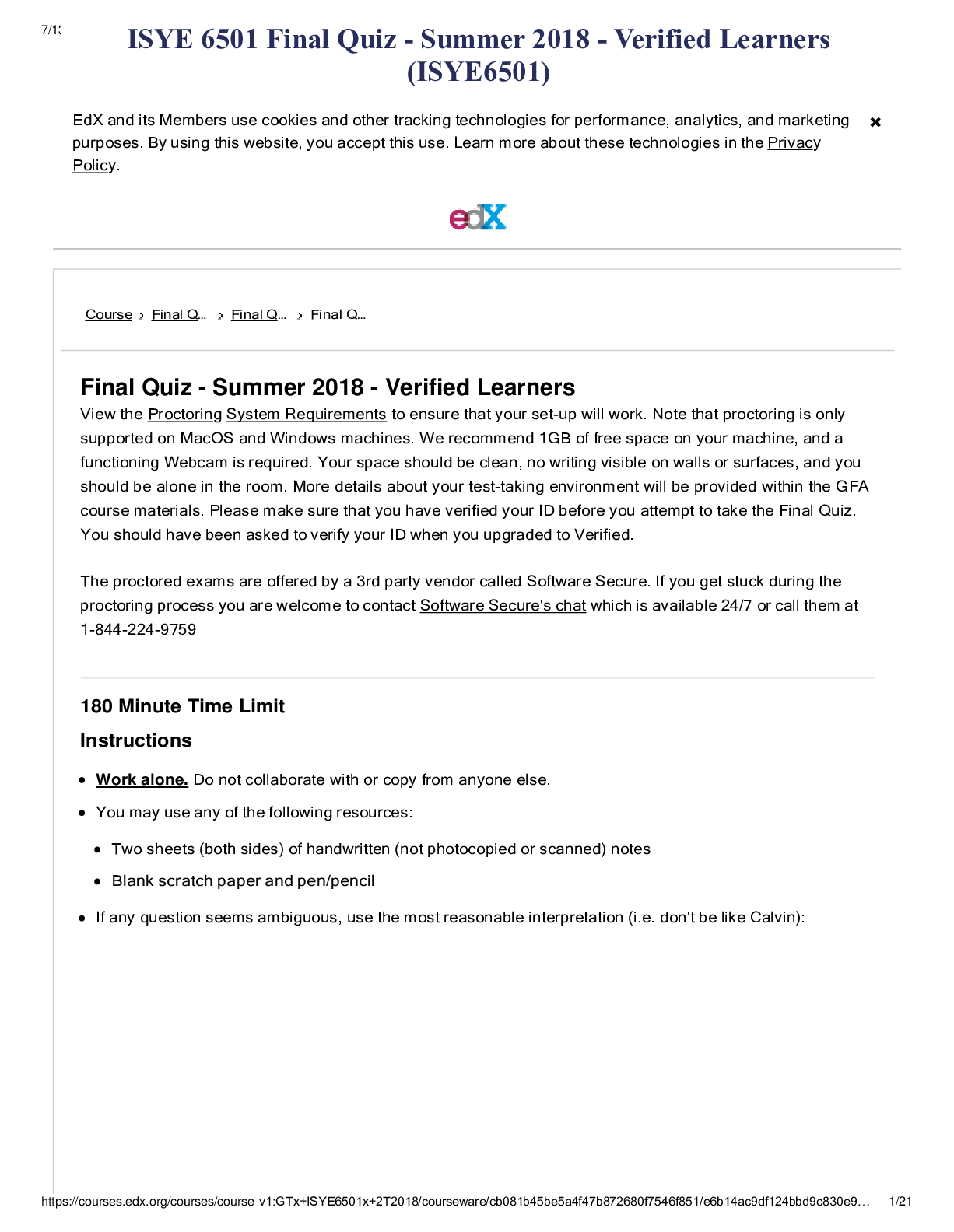
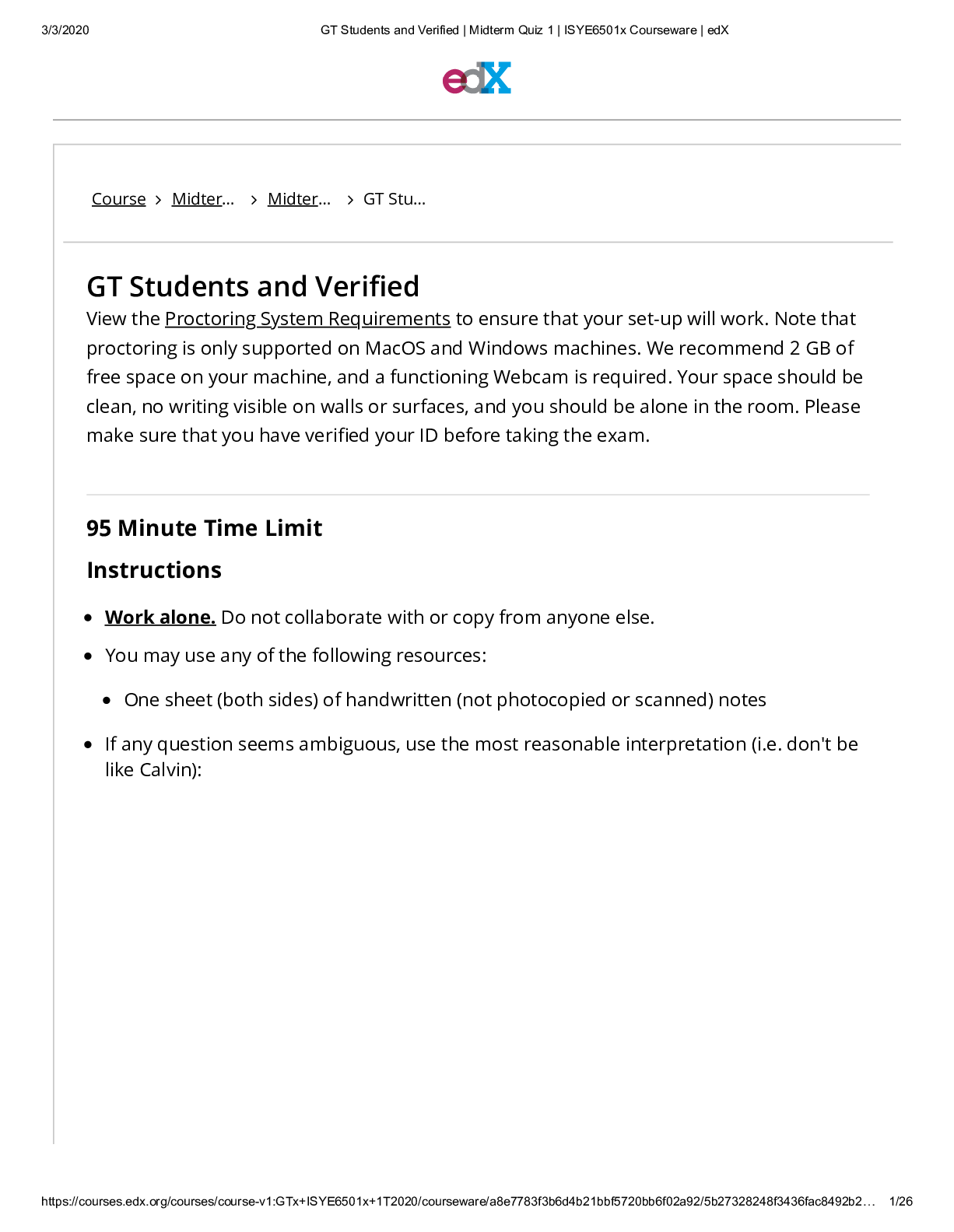
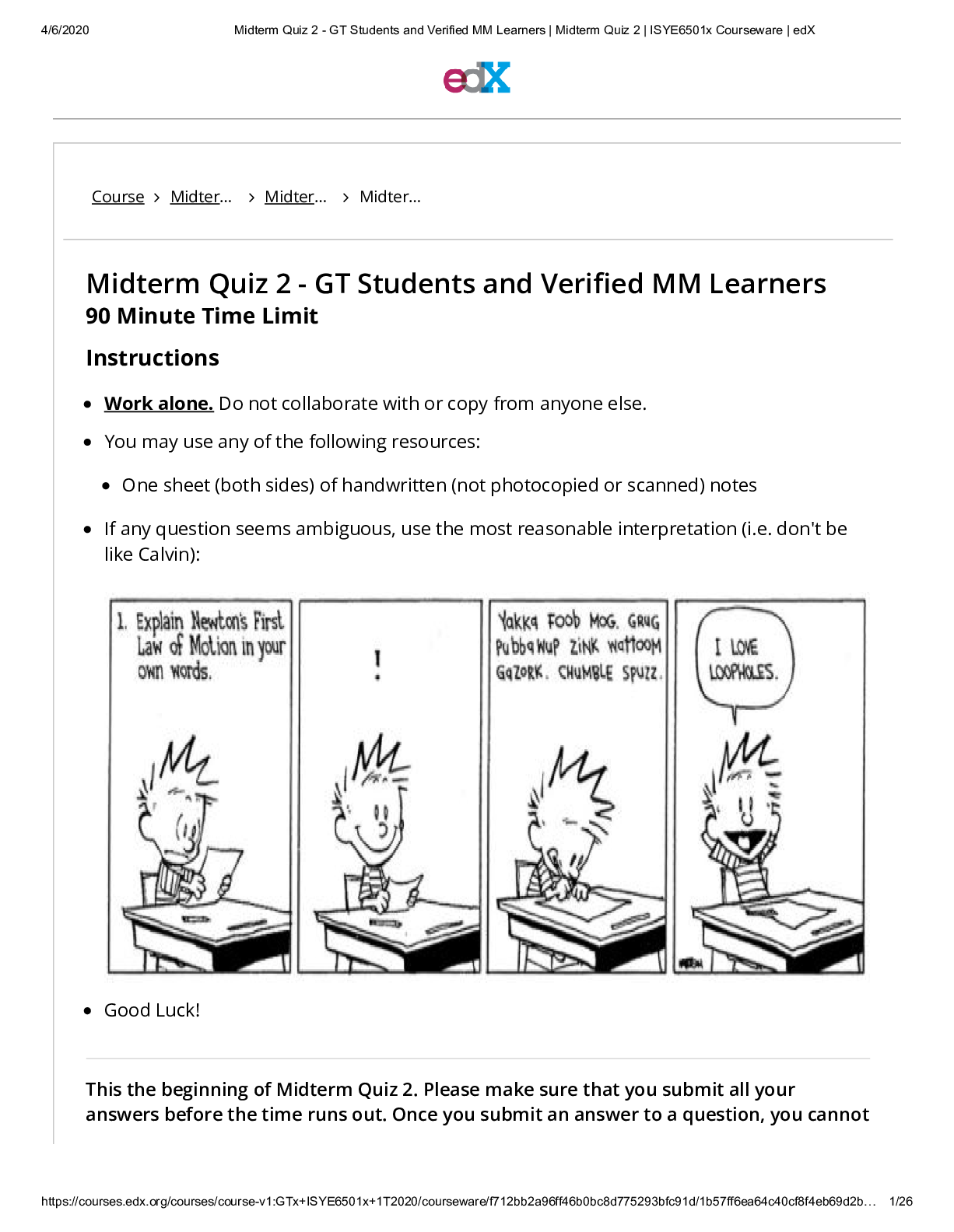
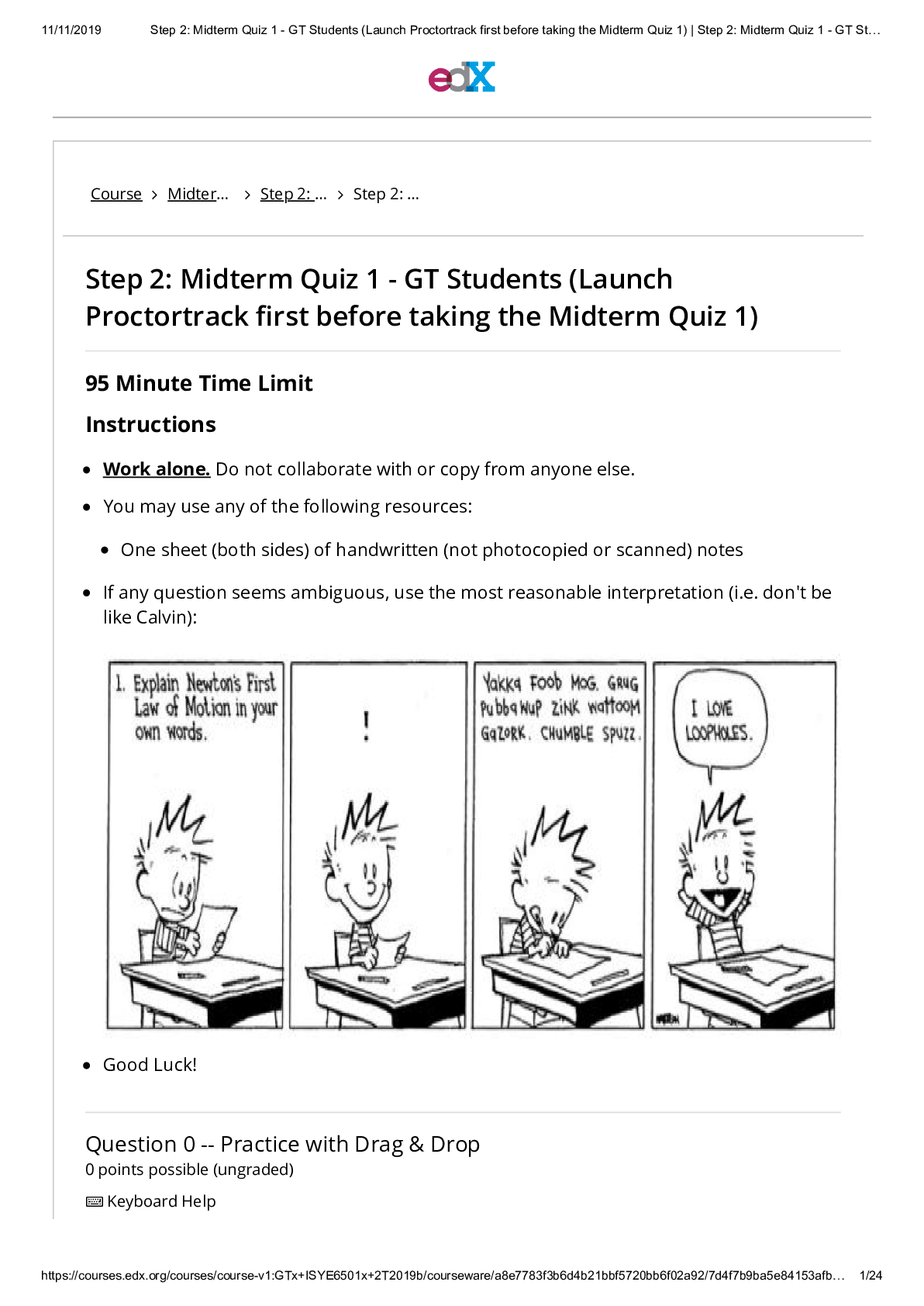


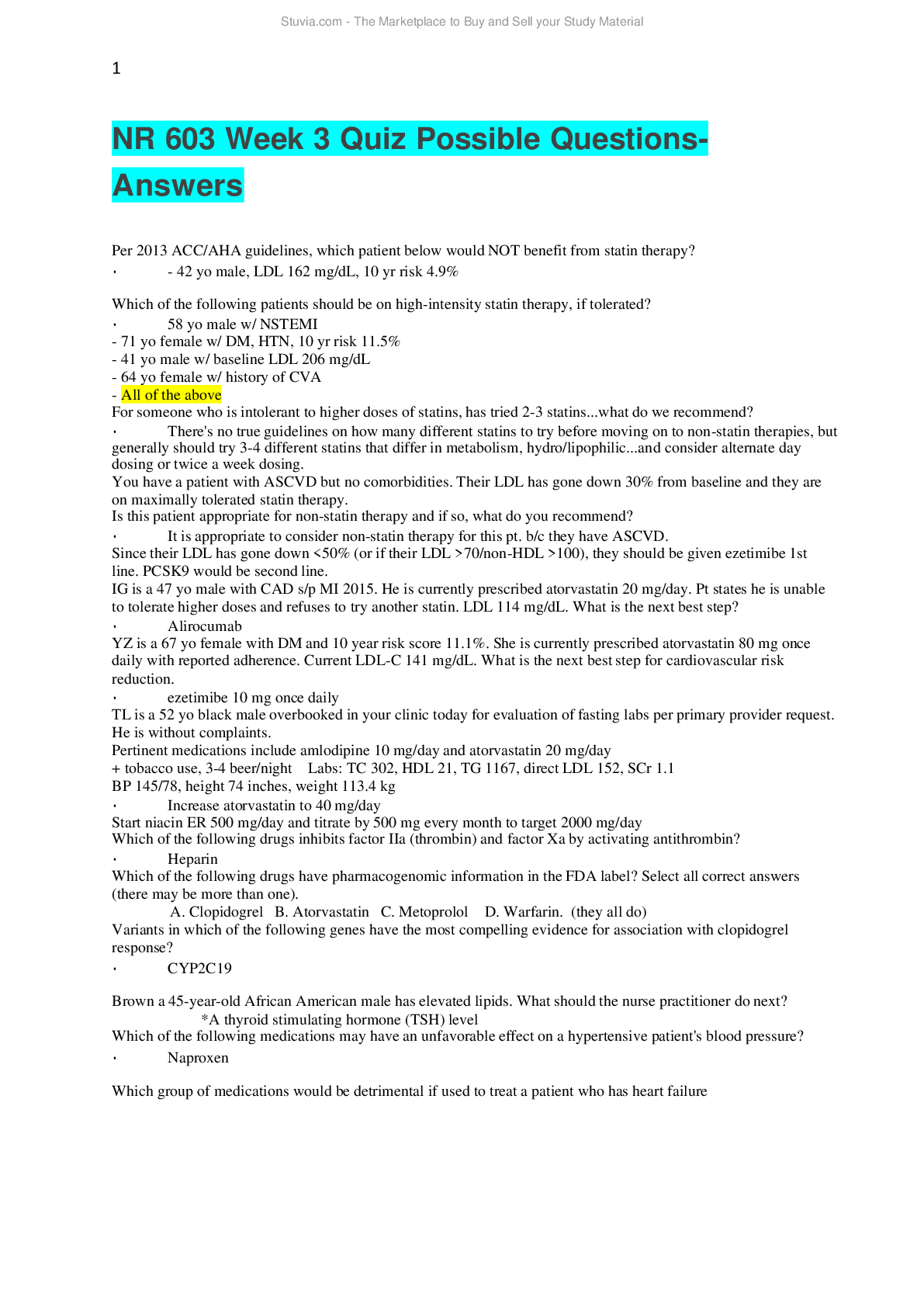


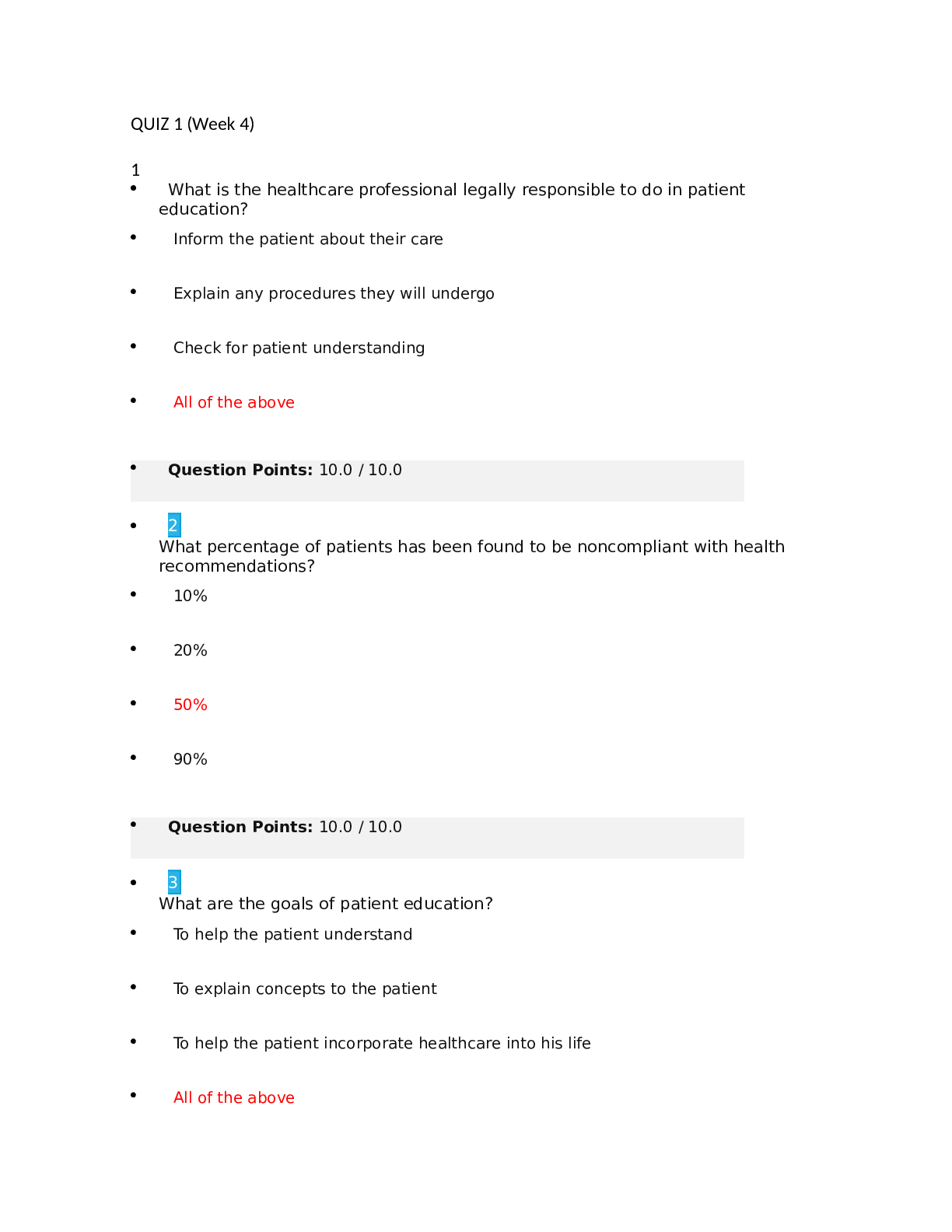
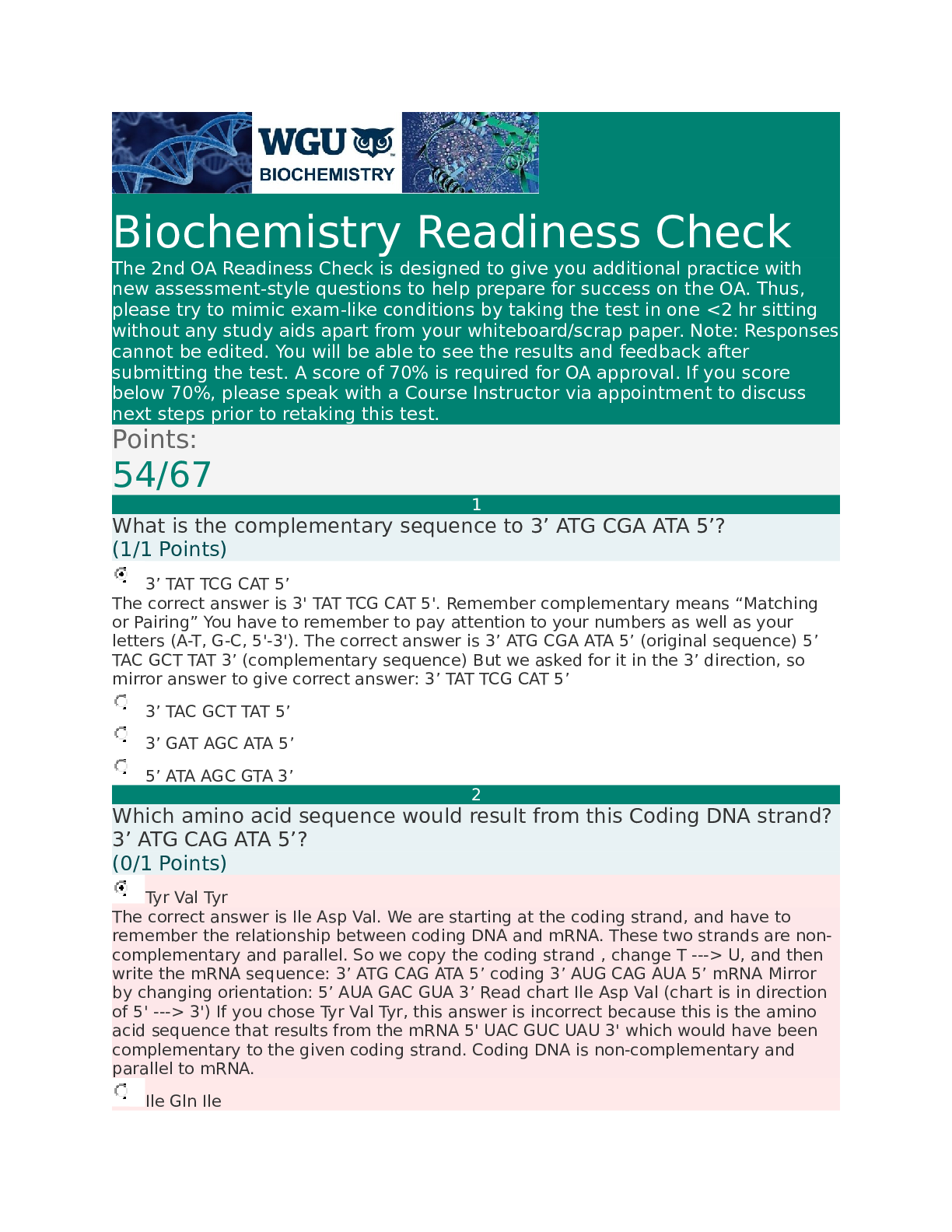

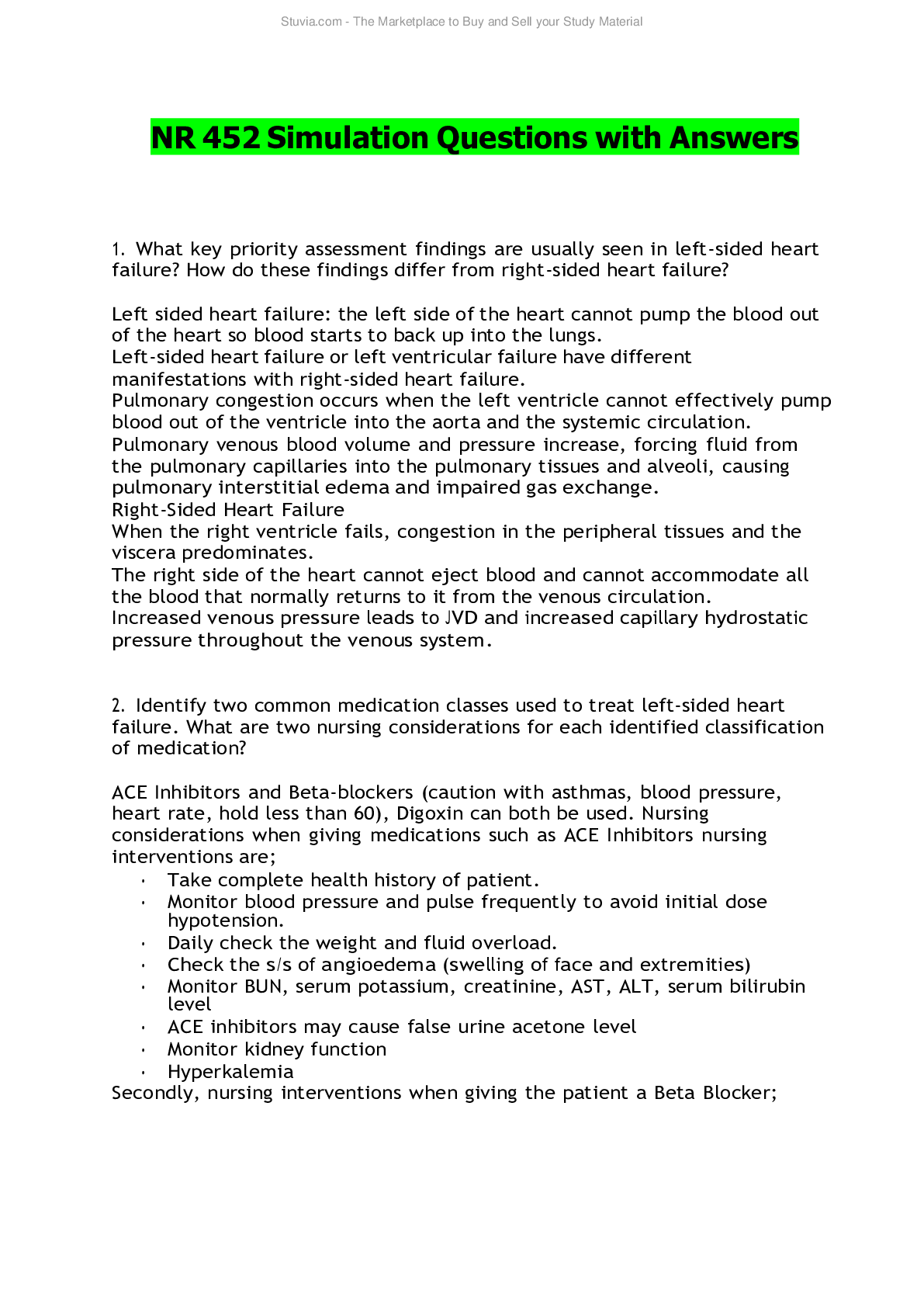

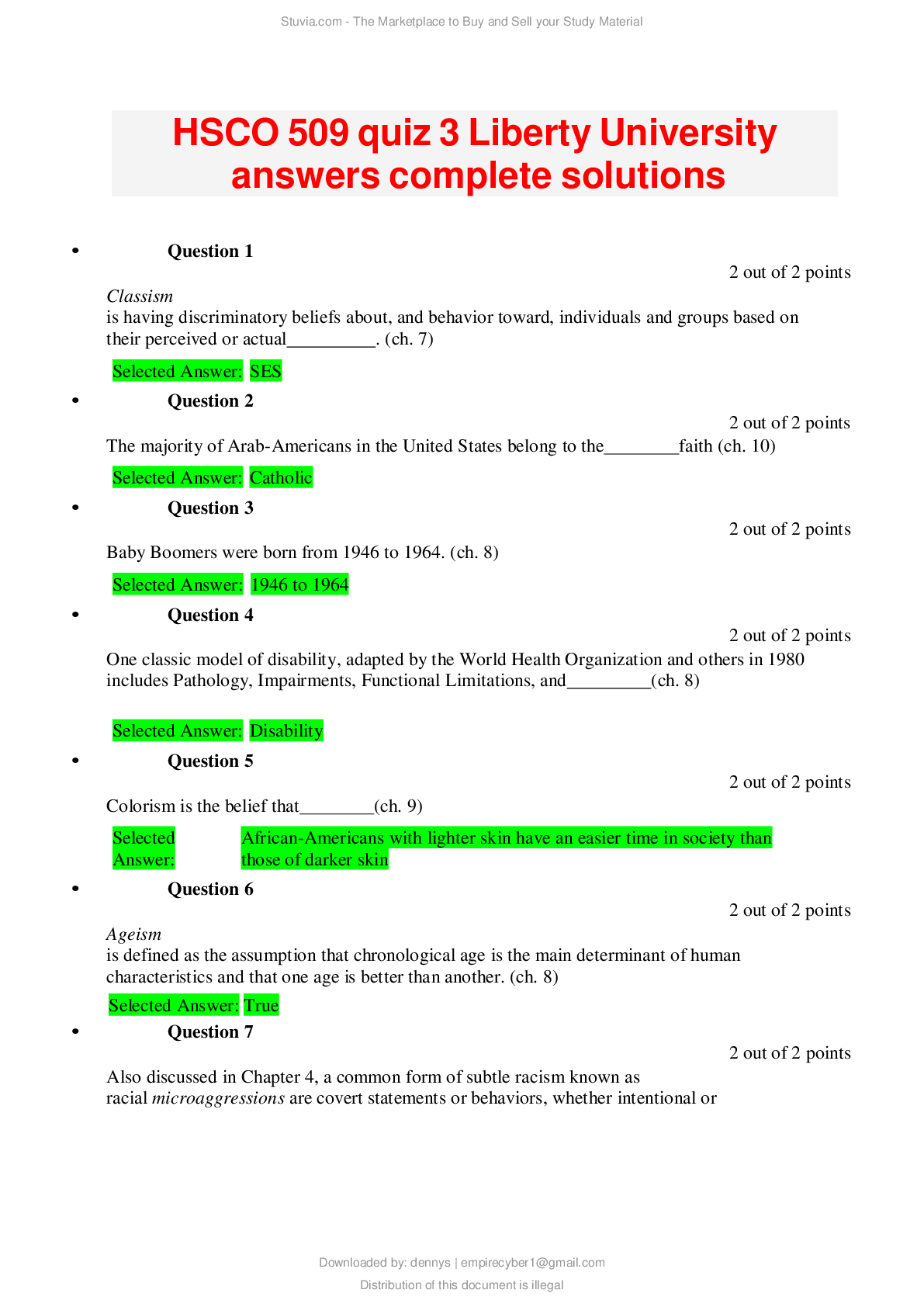
 Self-Assessment Examination (100 Questions With All Correct Answers) Complete solution.png)

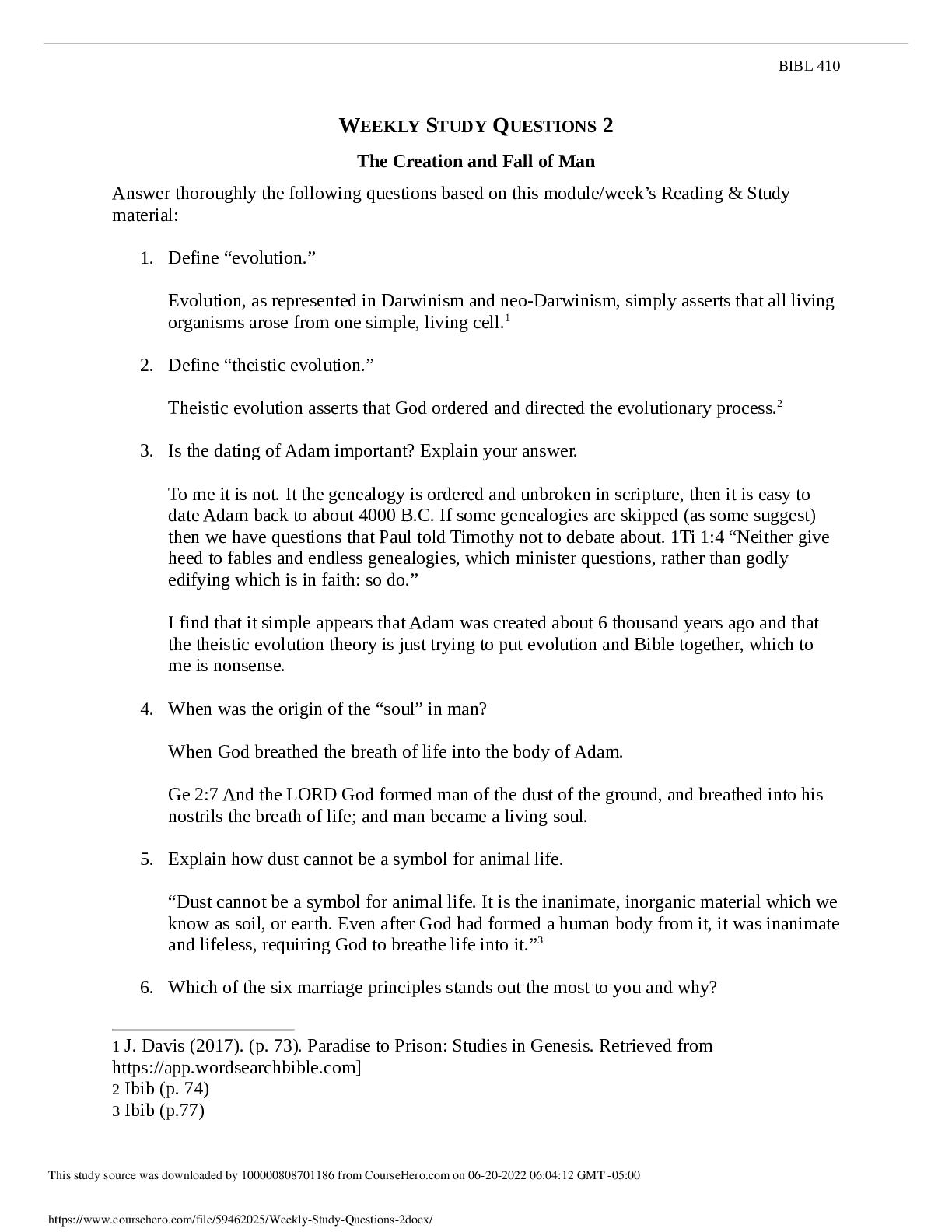
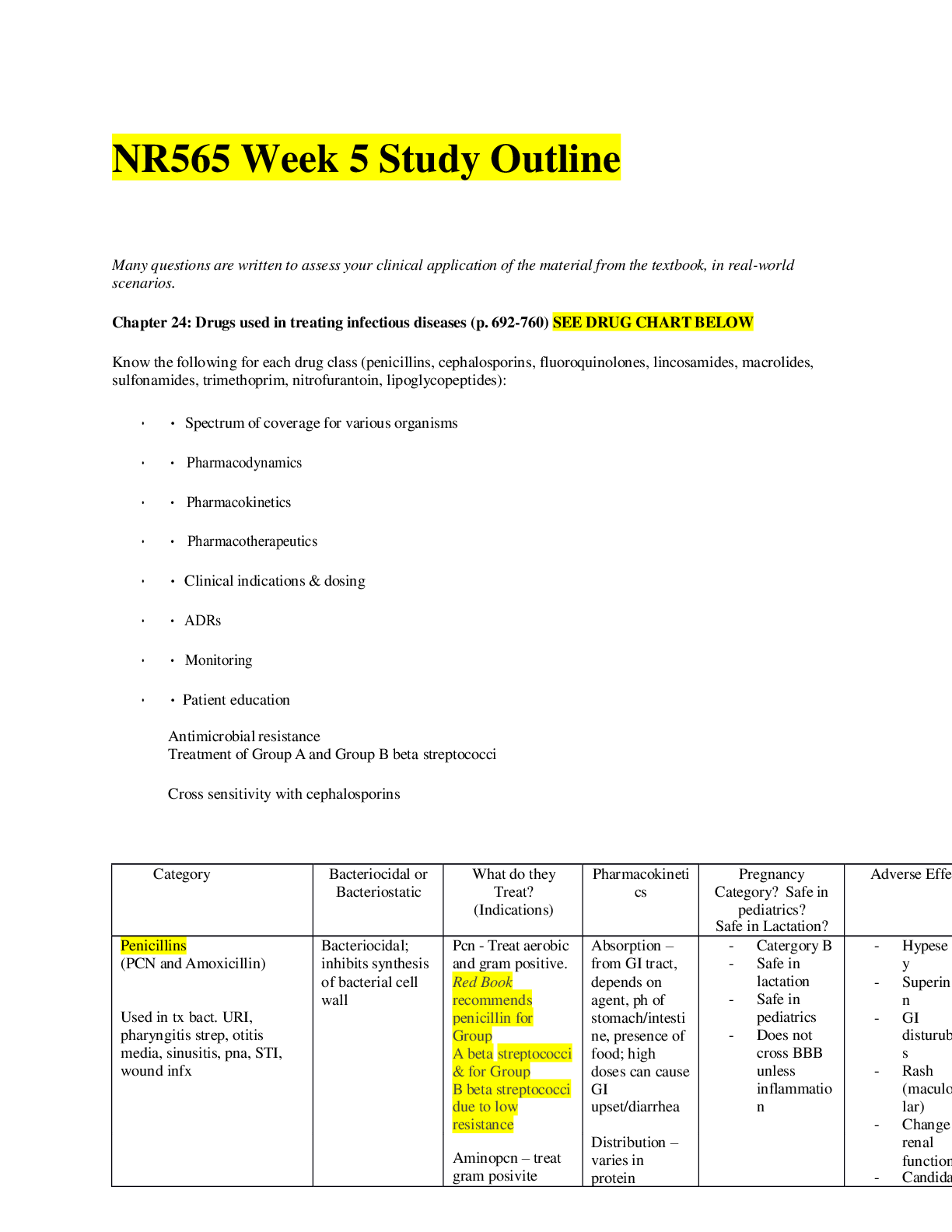

 Graded A.png)
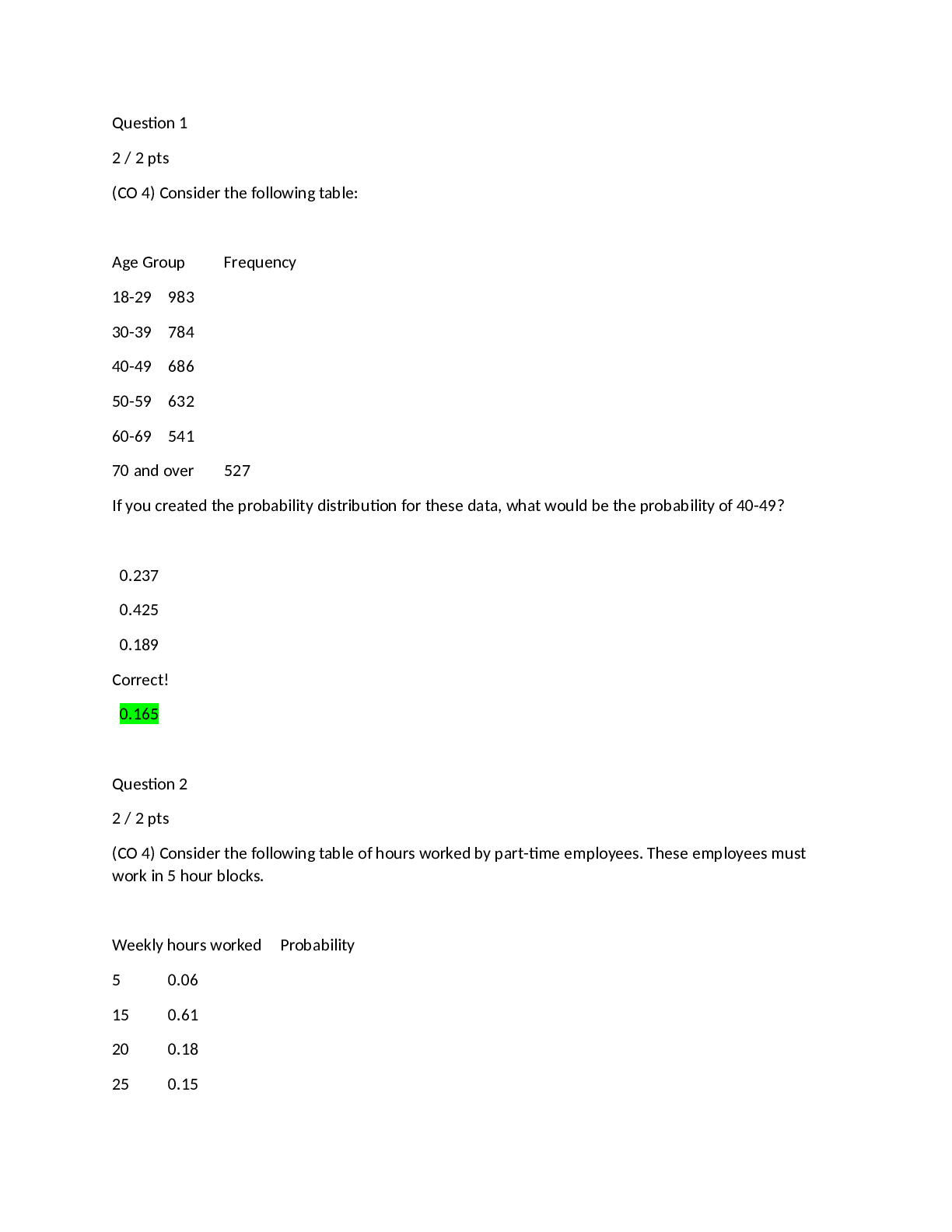
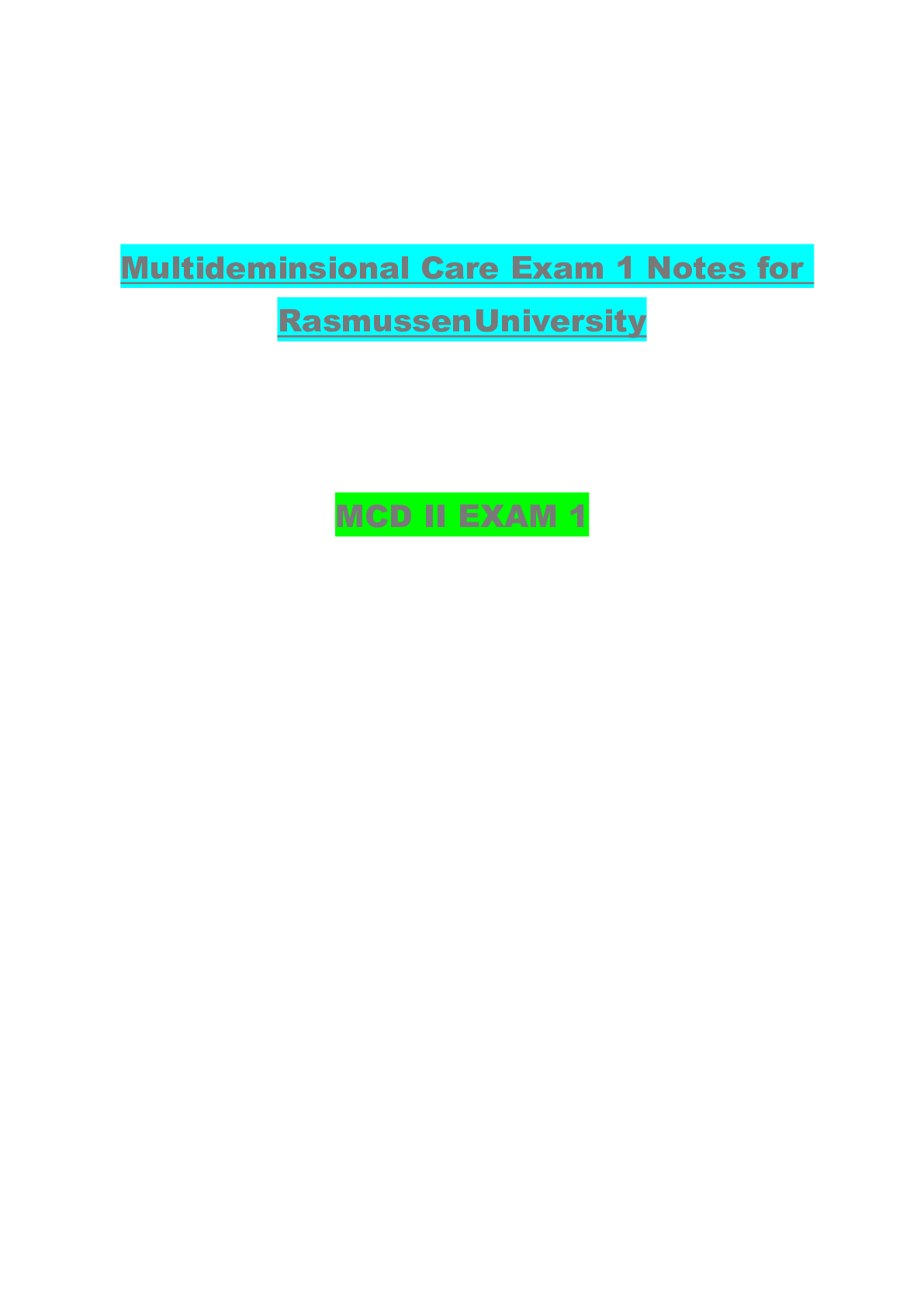
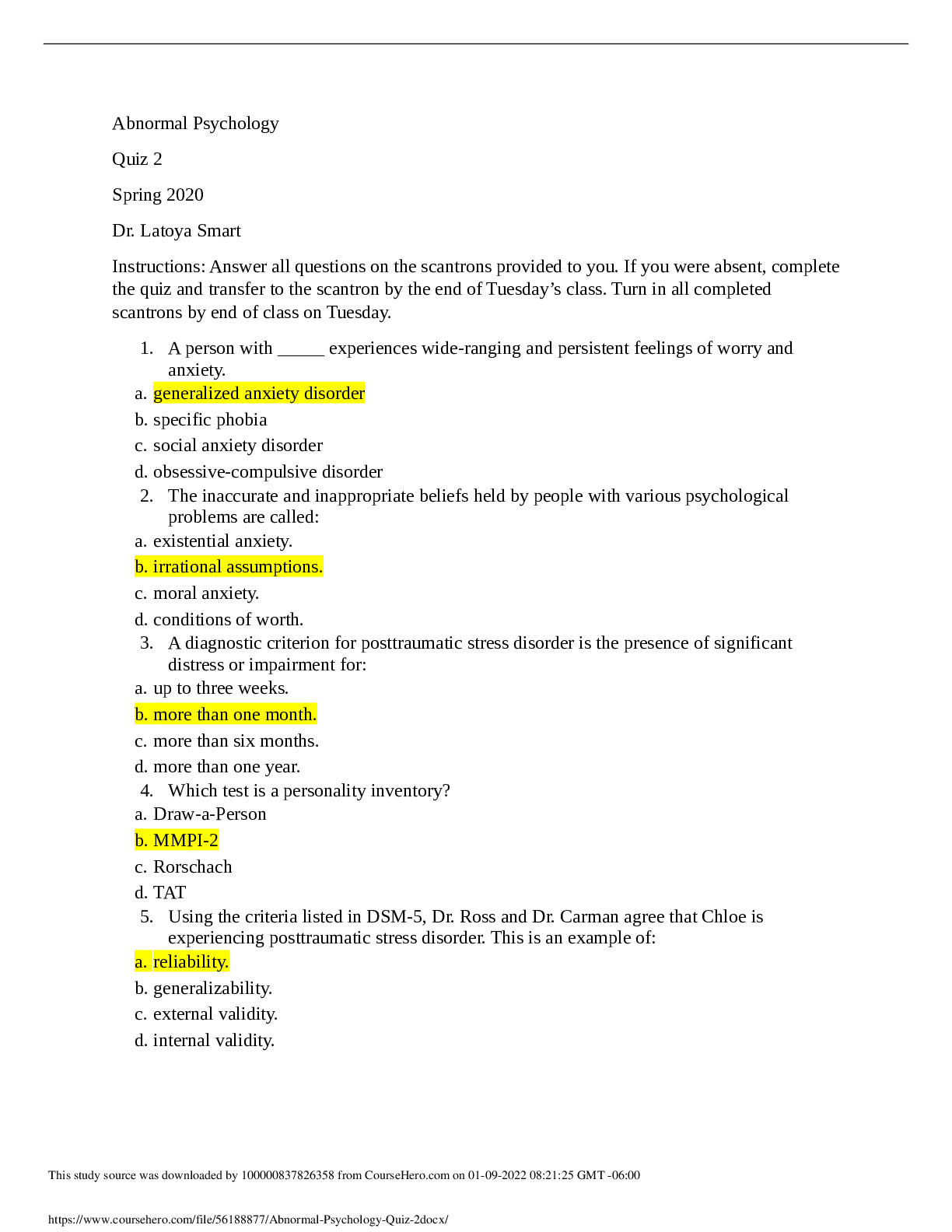
.png)
